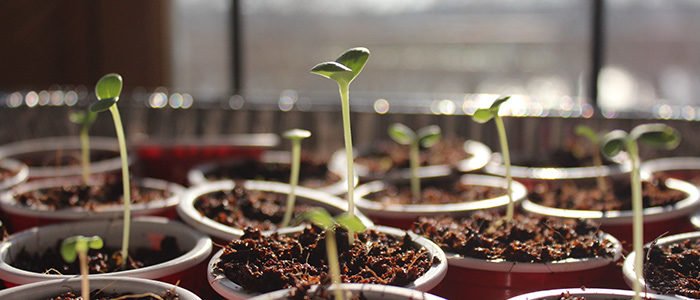
In this article: Get 5 Seed Starting Tips to Boost Your Vegetable Garden!
Every year, I spend hours lovingly planting and nurturing what feels like thousands of seeds. On average, we start around 300 tomato seeds, 100 peppers, 25 eggplants, and dozens of brassicas.
This site includes affiliate links. If you buy something through one of these links, I may earn a small commission. For more details on our privacy policy and data collection, check out my disclosure page.
We also grow herbs, cucumbers, and squashes. If you have a big garden, starting your own seeds is the most budget-friendly option! Plus, I adore trying unique varieties that you just can’t find in stores.
Seed starting isn’t always a breeze—you might hit a few bumps along the way. But if you follow these tips, you’ll be on the right track for success!
Starting seeds indoors can be tricky. Here are 5 tips to help you get the best results and give your garden a strong head start!
All plants share the same basic needs: sunlight, nutrients, and water. When you’re starting seeds indoors, you’ll need to create the perfect environment that meets these needs—and then some—to help your seeds sprout into strong, healthy seedlings.
5 Tips for Starting Seeds Indoors
1. Use the Right Temperature
While different plants have different temperature preferences, most seeds need an average soil temperature of around 75°F to germinate. If you’re starting seeds in an unheated greenhouse, cold basement, or another space without temperature control, you’ll need extra heat for proper germination.
A simple heated growing mat can do the trick. Some seeds need cooler or warmer temps, so always check your seed packet for specific soil temperature requirements.
Once your seeds sprout, they’ll still need the right temps to grow well. Cool-weather crops (like brassicas) prefer cooler conditions and won’t thrive in extreme heat. On the other hand, tomatoes, peppers, and eggplants grow faster in warm air. Still, keeping seedlings around 65–70°F helps prevent them from growing too fast and becoming leggy.
2. Pay Attention to Planting Depth
Poor germination often happens when seeds are planted at the wrong depth. Too deep, and the seedling exhausts its energy before reaching sunlight. Too shallow, and the seed may dry out before sprouting.
Some seeds (like lettuce) need light to germinate, so just press them into the soil instead of burying them. Check your seed packet for special instructions. A good rule of thumb? Plant seeds no deeper than their diameter.
Pro Tip: My Yearly Gardening Planner is perfect for tracking everything—from seed inventory to planting dates to pest issues. Start planning your best garden yet!
3. Consistent Watering (Very Important!)
Watering is crucial for seed starting. Too much leads to mold, fungus, or disease. Too little? Well… dead plants.
For best results, lightly mist the soil with a spray bottle to keep it evenly moist. Small seed trays or peat pellets dry out fast, so you may need to spray them a couple of times a day.
Once seeds sprout, you can water more deeply, letting the soil dry slightly between waterings. Letting seedlings wilt just a little before watering can actually toughen them up and strengthen their roots.
4. Give Ample Light
Most seeds don’t need light to germinate, but once they sprout, they’ll need 14–16 hours of light daily.
Place seed trays near a south-facing window, under grow lights, or in a greenhouse (if temps are right). If using artificial lights, make sure they’re adjustable—keep them close to the seedlings without touching.
Even with a sunny windowsill, you might need extra light in winter when days are shorter. Rotate trays regularly so all seedlings get equal light and avoid leggy growth.
5. Use the Right Soil
Your seed-starting mix sets the foundation for success. Many gardeners swear by soilless mixes—peat pellets, pre-mixed blends, or homemade versions.
A common mix is equal parts vermiculite, perlite, and peat moss. Personally, I use about half organic potting soil and half peat moss with great results. You’ll find endless variations—some use garden soil, while others mix multiple ingredients.
For inspiration, check out Better Hens and Gardens’ Mix or The Organic Goat Lady’s Seed Starting Mix. You can also see what others recommend in this Facebook thread where gardeners shared their favorite mixes!
Honestly? If seeds can sprout in my garden’s rich, compost-filled soil, my indoor seeds can handle it too.
